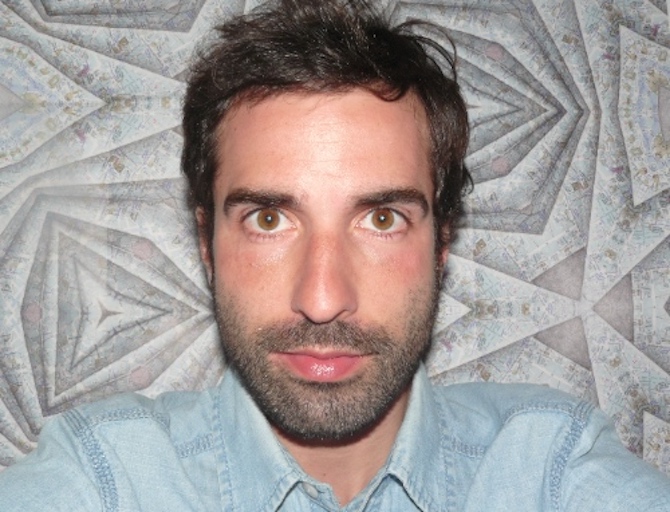Search
To search for an exact match, type the word or phrase you want in quotation marks.
A*DESK has been offering since 2002 contents about criticism and contemporary art. A*DESK has become consolidated thanks to all those who have believed in the project, all those who have followed us, debating, participating and collaborating. Many people have collaborated with A*DESK, and continue to do so. Their efforts, knowledge and belief in the project are what make it grow internationally. At A*DESK we have also generated work for over one hundred professionals in culture, from small collaborations with reviews and classes, to more prolonged and intense collaborations.
At A*DESK we believe in the need for free and universal access to culture and knowledge. We want to carry on being independent, remaining open to more ideas and opinions. If you believe in A*DESK, we need your backing to be able to continue. You can now participate in the project by supporting it. You can choose how much you want to contribute to the project.
You can decide how much you want to bring to the project.

Three videos show a choreography of power with three transformed kitchen utensils: a cup with six handles and a saucepan with four. Inside them, food and water. Hands appear and disappear from the scene, struggling to get hold of the food. Despite the multiplication of the hands that grasp, only one gets the spoils. “Win or die” is a simple metaphor for the failure of utopia. And the response to the working cycle, proposed by the young artist Camila Ramírez (Antofagasta, Chile, 1988) in 2012.
In the last year, Camila Ramírez has exhibited two pieces closely related to each other but with open interpretations. Objects that, in her own words, are “inclusive, recognisable, as I want them to be accessible by any kind of public”. Working tools such as shovels, wheelbarrows, hammers or axes that suffer mutations in their extremities: ten arms come out of the shovel, three wheels from the wheelbarrow, etc. Deformations that make us think of the solidarity of workers, the strength of the collective and the exploitation of the workforce. Creations, that talk to us in a universal language, from a local grammar. Camila Ramírez lives in a peripheral and precarious zone of the Santiago capital, La Cisterna: “my place of origin has left its mark on me, albeit unconsciously. I come from a simple place, and one’s origin is everything, the district is the homeland. I have closer ties with my district than with my country”.
Chile is one of the countries with the greatest socio-economic inequality in the world, the heritage of the cannibalistic neoliberalism founded by the Chicago Boys in the era of the dictator Pinochet. Stemming from this geographical premise, we can understand in a distinct manner another of her creations shown in 2012: the three-seated university chair. Education in Chile is privatised to the point of suffocation. In another exhibition, she tackled the problem of the collective in a more playful format: in “A million jobs” she used various people to hold up a swing and a toboggan.
It is very easy to throw shots at other artistic times when the issue of productivity and social values has been treated. From Egyptian art through to Soviet propaganda. However, I stop at the murals by Diego Rivera and Clemente Orozco commissioned by President Roosevelt. In the decade of the thirties, the United States was going through its worst crisis due to the crash of 29; they needed to enhance the largess of industry and the communitarian solidarity of the workers. Tools and machines were the backdrop of these murals that promoted the virtues of civil collaboration, with conclusions extracted, and obviously, admiration of personalities such as Lenin, Marx or Stalin, diabolical figures in the minds of the North Americans. Little was learnt from that crisis, as shown by the present economic-financial crisis (that also doesn´t seem to be teaching us anything). Capitalism has become an unjust division of labour, a credit dictatorship and a banking war: an impoverishment of the southern hemisphere, an expansion of hunger in Africa and Asia, as opposed to the growing elitisization of the elite. One can multiply the handles on the cups, or those on the saucepans, but it will always only be one hand that takes all. One can construct shovels with ten arms that will always be used by the same working hands.
“Win or lose” (he who gets the food triumphs, the other disappears) is a response to the prior proposals by Camila Ramírez. I asker her if there is room for hope in her thesis; “I think so, though it is complicated because I don´t know if utopia itself serves to define whether it is possible or not. I relate a lot to the romanticism of politics, I have participated in various party activities it is something that really moves me. I would like people to connect with this”.

His intention is to continue to improve his writing of art criticism; everything else is enjoying and learning from contemporary proposals, establishing other strategies of relations, either as a contributor to magazines, editor of a review, curator or lecturer. As a backpacking art critic, he has shared moments with artists from Central America, Mexico and Chile. And the list will continue. Combating self-interested art, applauding interesting art.
"A desk is a dangerous place from which to watch the world" (John Le Carré)